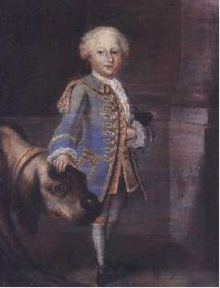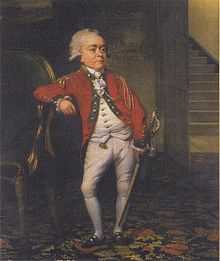Court dwarf

Early dwarfs, whose histories were recorded, were sometimes employed as court dwarfs. They were owned, exploited, and traded amongst people of the court, and delivered as gifts to fellow kings and queens.[1]
Visual effect
Court dwarfs enjoyed their specific placement right next to the king or queen in a royal court during public appearances and ceremonies, because they were so small, the king appeared much larger and visually enhanced his powerful position.[2]
Ancient Egypt, Greece and Rome

From the earliest historic times dwarfs attracted attention, and there was much competition on the part of kings and the wealthy to obtain dwarves as attendants.[3] Ancient Egypt saw dwarfs as being people with significant sacred associations, so owning a dwarf gave a person high social stature.[1] Members of the tiny Akka race of Equatorial Africa figured at the courts of the Pharaohs of the early dynasties and were much valued.[3]
Philetas of Cos, poet and grammarian (circa 330 BC), tutor of Ptolemy Philadelphus, was alleged to be so tiny that he had to wear leaden shoes lest he should be blown away. The Romans practised artificial dwarfing, and the Latin nanus or pumilo were terms alternatively used to describe the natural and unnatural dwarf. Julia, the niece of Augustus, had a dwarf named Coropas 2 feet 4 inches (0.71 m) high, and a freed-maid Andromeda who measured the same.[3]
England and Great Britain
British tradition has its earliest dwarf mentioned in the old ballad which begins "In Arthur’s court Tom Thumb did live";[4] and on this evidence the prototype of the modern Tom Thumb is alleged to have lived at the court of King Edgar. Of authentic English dwarfs the first appears to be John Jarvis 2 feet (0.61 m), who was page to Queen Mary I. Her brother King Edward VI had his dwarf Xit.[4]
The first English dwarf of whom there is anything like an authentic history is Jeffery Hudson (1619-1682). He was the son of a butcher at Oakham, Rutland, who kept and baited bulls for George Villiers, 1st Duke of Buckingham. Neither of Jeffery’s parents was under-sized, yet at nine years he measured scarcely 18 inches (0.46 m) though he was gracefully proportioned. At a dinner given by the Duke to Charles I and his queen he was brought in to table in a pie out of which he stepped, and was at once adopted by Queen Henrietta Maria. The little fellow followed the fortunes of the court in the English Civil War, and is said to have been a captain of horse, earning the nickname of "strenuous Jeffery" for his activity.[4] He fought two duels—one with a turkey-cock, a battle recorded by Davenant, and a second with Mr Crofts, who came to the meeting with a squirt, but who in the more serious encounter which ensued was shot dead by little Hudson, who fired from horseback, the saddle putting him on a level with his antagonist. Twice was Jeffery made prisoner—once by the Dunkirkers as he was returning from France, whither he had been on homely business for the Queen; the second time was when he fell into the hands of Turkish pirates. His sufferings during this latter captivity made him, he declared, grow, and in his thirtieth year, having been of the same height since he was nine, he steadily increased until he was 3 feet 9 inches (1.14 m) At the Restoration he returned to England, where he lived on a pension granted him by the duke of Buckingham. He was later accused of participation in the Popish Plot, and was imprisoned in the Gate House. He was released and shortly after died in the sixty-third year of his age.[4]
Contemporary with Hudson were the two other dwarfs of Henrietta Maria, Richard Gibson and his wife Anne. They were married by the Queen’s wish; and the two together measured only 7 feet 2 inches (2.18 m) They had nine children, five of whom, who lived, were of ordinary stature. Edmund Waller celebrated the nuptials, Evelyn designated the husband as the "compendium of a man",[4] and Lely painted them hand in hand. Gibson was miniature painter to Charles I, and drawing-master to the daughters of JameII, Queens Mary II and Anne, when they were children. Gibson was from Cumberland and began his career as a page, first in a "gentle", next in the royal family, died in 1690, in his seventy-fifth year, and is buried in St Paul’s, Covent Garden. The last court dwarf in England was Coppernin, a lively little imp in the service of the princess (Augusta) of Wales, the mother of George III The last dwarf retainer in a gentleman’s family was the one kept by Mr Beckford, the author of Vathek and builder of Fonthill. He was rather too big to be flung from one guest to another, as used to be the custom at dinners in earlier days when a dwarf was a "necessity" for every noble family.[4]
Other European courts

Of European court dwarfs the most famous were those of Philip IV of Spain, the hunchbacks whose features have been immortalized by Velazquez. Stanislas of Poland, owned Nicholas Ferry ("Bébé"), who measured 2 feet 9 inches (0.84 m) He was one of three dwarf children of peasant parents in the Vosges. He died in his 23rd year (1764).[4]
Richebourg (1756–1846), was only 23 inches (0.58 m) high. He began life as a servant in the Orleans family. In later years he was their pensioner. He is said to have been put to strange use in the French Revolution—passing in and out of Paris as an infant in a nurse’s arms, but with despatches, dangerous to carry, in Richebourg’s baby-wrappings! He died in Paris in 1858, at the age of 90.[4]
-

Portrait of Józef Boruwłaski (1739–1837), court dwarf
-
Detail of Las Meninas by Diego Velázquez showing two court dwarfs
See also
- Court jester
Notes
- ↑ 1.0 1.1 Adelson 2005, p.
- ↑ Ikengainc staff 2013.
- ↑ 3.0 3.1 3.2 Chisholm 1911, p. 739.
- ↑ 4.0 4.1 4.2 4.3 4.4 4.5 4.6 4.7 Chisholm 1911, p. 740.
Further reading
- Adelson, B. (2005). The Lives of Dwarfs. New Brunswick: Rutgers University Press. ISBN 0-8135-3548-4.
- Ikengainc staff (1 May 2013). "Court Dwarf". Ikengainc. Retrieved 8 February 2013.
Attribution
-
 This article incorporates text from a publication now in the public domain: Chisholm, Hugh, ed. (1911). "Dwarf". Encyclopædia Britannica 8 (11th ed.). Cambridge University Press. pp. 739–740.
This article incorporates text from a publication now in the public domain: Chisholm, Hugh, ed. (1911). "Dwarf". Encyclopædia Britannica 8 (11th ed.). Cambridge University Press. pp. 739–740.
